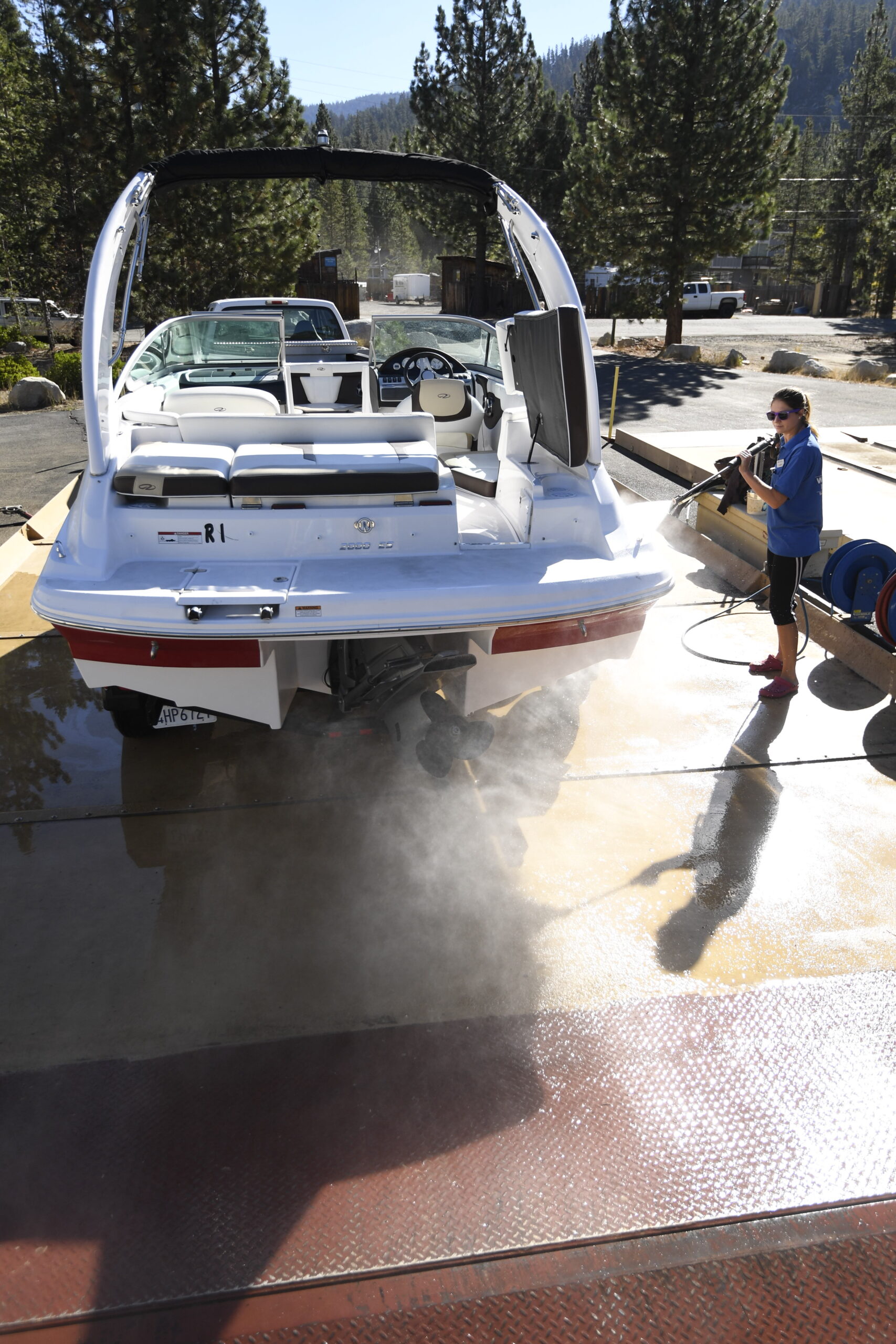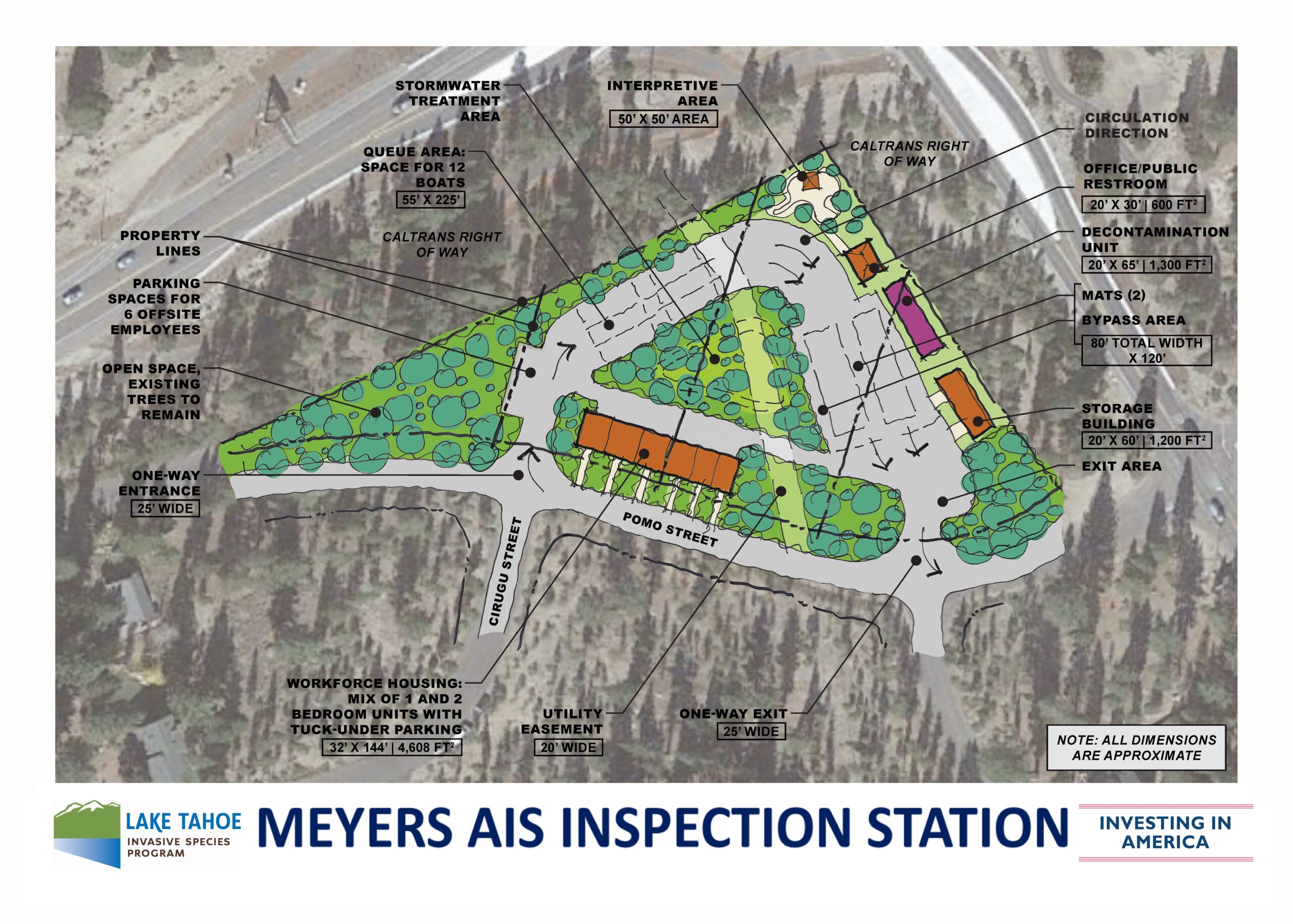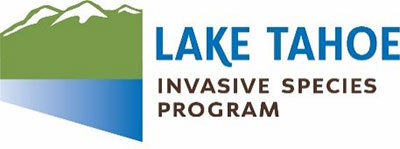Meyers Permanent Aquatic Invasive Species Inspection Station
Tahoe Regional Planning Agency and the Tahoe Resource Conservation District are working together to meet the long-term needs of the Lake Tahoe Aquatic Invasive Species Program by securing permanent locations for watercraft inspection stations around the lake. These agencies are collaborating with El Dorado County and the California Tahoe Conservancy to pursue a permanent home for the watercraft inspection station in Meyers, California where approximately 2,000 boats are inspected every year to protect Lake Tahoe from aquatic invaders.
Background
With the discovery of quagga mussels in Lake Mead in 2007, the Tahoe Regional Planning Agency (TRPA) took quick and decisive actions to protect Lake Tahoe from new devasting aquatic invasive species and implemented a mandatory watercraft inspection program. Lake Tahoe’s program serves as a national model, incorporating protective protocols based on science, paired with exceptional customer service. Other programs nationwide mimic the Lake Tahoe program.
Watercraft are one of the leading vectors for spreading aquatic invasive species (AIS) into new waterways. AIS negatively impact aesthetics, recreation, the economy, native, sport and local species, and water quality and can increase algae growth that contributes to the decline of Lake Tahoe’s famous water clarity. Mandatory inspections stop aquatic invasive species before they enter the water.
Since the watercraft inspection program began in 2008, more than 118,000 vessels have been inspected at seasonal inspection stations around Lake Tahoe to help boaters get on the water safely and efficiently. There are typically three stations operating near key basin entry points during the boating season, with the Meyers station serving the southern portion of the Tahoe Basin.
This project is part of the Lake Tahoe Environmental Improvement Program (EIP). Visit the EIP Project Page for additional details.

New Location

The existing, leased location at 2175 Keetak Street has little capacity for waiting boaters, which results in queuing boats on public roadways and unsafe conditions for watercraft inspectors and the public. The current location also requires seasonal setup and breakdown.
The proposed new location is on four California Tahoe Conservancy asset land parcels on Pomo Street near the junction of State Route 89 and U.S. Highway 50. The site provides the opportunity for better facilities for watercraft inspectors and the public: it has queuing space for at least 14 boats, which essentially eliminates the potential for clogging public roadways. It’s significantly safer for inspectors and the public as inspections would not need to occur on the roadway, and reduces the work needed for annual setup and breakdown. A permanent facility also provides the opportunity for onsite workforce housing for watercraft inspectors in summer and snow removal staff in winter.
FAQ
Why does the Meyers watercraft inspection station need a new home?
Why now?
Why must it be on publicly owned parcels?
Why is the proposed site ideal?
The proposed location would provide a safer space for inspectors to work and the public to visit. For example, the proposed site is designed for approximately 14 tow vehicles and trailers to fit on-site, while the current site has room for only three. The capacity to queue onsite significantly reduces any potential for traffic backups or user conflicts on the public roadways.
The proposed site can also accommodate the necessary infrastructure to meet the needs of the AIS program, including a permanent office building and restrooms. It will be intentionally built to expedite operations and increase safety, while limiting noise, traffic, and visual impacts. The proposed site will also give program partners the potential space and flexibility that may be needed to upgrade inspection and decontamination equipment more readily as boat technology advances.
Other public lands in the area either do not meet site criteria or are unavailable.
Why not conduct inspections at boat ramps?
Does the watercraft inspection station align with the Meyers Area Plan?
What is the timeline for the proposed project?

Why is workforce housing being considered in site design?
How do I stay updated?
News and updates on the project will be shared here as they arise.
If you would like to receive emails with updates from TRPA on this project, please enter your information and sign-up for those updates HERE. You may submit comments or questions at meyersais@trpa.gov.
Timeline

Stay involved!
Subscribe to Updates
Sign up for updates to stay up to date on the progress of this project.
Public Workshops
Next public workshop coming in spring of 2025! Watch the recording or view the slides of the 10/14/24 hybrid public meeting.
Questions?
Email Dennis Zabaglo, AIS Program Manager at Tahoe Regional Planning Agency or Thea Graybill, Acting Planning Manager for El Dorado County:
